- Old Draft: Beatles Folk Memory 1970-1995 - December 8, 2025
- Lights are back on. - December 8, 2025
- From Faith Current: “The Sacred Ordinary: St. Peter’s Church Hall” - May 1, 2023
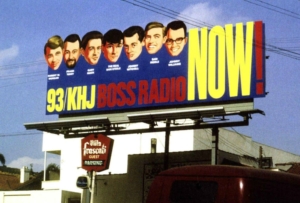
KHJ billboard, LA, 1960’s.
Yesterday quite randomly I stumbled upon this archive of recordings from Los Angeles’ legendary rock and roll radio station, KHJ. “Boss 93” started in 1965, and for fourteen years was beloved by young groovers like Quentin Tarentino, who used the station as part of the soundscape behind Once Upon a Time in Hollywood. (Here’s a nice appreciation from Los Angeles Magazine.)
I started with this hour, from April 24, 1966. As I listened, it made me aware of a bunch of things:
1) The furious pace of change in The Beatles’ music. We talk about this a lot, but here you really hear it. In ’66, a lot of these artists were still aping The Beatles ’64 sound; halfway through, there is a sour and obnoxious Chad and Jeremy song called “Teenage Failure” which I’d never heard before, a jangled up, Beatlized incel anthem. I don’t mean to pick on poor Chad and Jeremy (who scored a hit with the Lennon/McCartney “From a Window“), but as the cliche-laden “Teenage Failure” was being played as a new release on Top 40 radio, The Beatles were recording “Tomorrow Never Knows.”
2) The generally high quality of the music. Even something completely middlebrow and unambitious like The Mindbenders’ “Groovy Kind of Love” is a marvelous little piece of pop songwriting, wonderfully produced and performed. And it’s very…sweet? Compare this to contemporary culture, and it seems almost unbearably romantic—and thus rather false. But we know it was connecting with people, because they were buying it. Pop music’s parameters hadn’t yet expanded in 1966, and working within that limited palette had benefits as well as disadvantages. If you were a genius—say, The Beatles, or Stevie Wonder (compare “Nothin’s Too Good for My Baby” a slab of fun, bland Motown, with “Superstition” six years later) it restricted you. But if you weren’t a genius, like The Mindbenders or The Lovin’ Spoonful, it gave you a template that really worked. (I like John Sebastian as much as the next Kotter, but he wasn’t a genius.)
3) That song is followed by an ad for the movie The Loved One, is a Terry Southern/Christopher Isherwood-penned adaptation of a Evelyn Waugh novella from 1948. If you watch it now, the film really doesn’t come off, in the same way that a lot of 1960’s-era satire doesn’t (looking at you, I Love You Alice B. Toklas, Catch-22, many others). It’s hard to say what doesn’t work exactly, but my first guess is that it’s about ten years too late, an attempt by a bunch of 1940s-50s era hipsters (Southern; Tony Richardson; Jonathan Winters; Lenny Bruce was offered the part of “Guru Brahmin” but turned it down) to translate a very postwar, very Europhilic takedown of Hollywood and Americanism long after that mindset had lost its capacity to surprise. American life fundamentally unnatural, status conscious and distorted by money? By 1965, that was old news. The problem is, when that message would’ve really hit, it was impossible to make a movie like that; there’s nothing worse than satire two steps too slow. The Loved One was hoping to connect to a young audience which was already demanding terms that were much darker, more excessive, and more alienated than Hollywood was willing to offer. The Loved One is one of several Southern satires that simply don’t make it—Candy, The Magic Christian—these are 40s/50s stories, written and produced by 40s/50s people. It would take Hollywood at least another year (The Graduate, Bonnie and Clyde) and arguably three (Southern’s Easy Rider) to speak in a filmic language that the Boomers really connected with.
4) The ad for “Andy Warhol’s Exploding Plastic Inevitable” at The Troubadour. The Troub is a club on the Sunset Strip, which still exists today—right down the street from the venerable Dan Tana’s which poisoned me in February. Imagine watching the Velvet Underground and Nico, plus a light show, plus Andy’s movies in April 1966! With or without drugs, your head would be rearranged. This—not The Loved One—was a glimpse of what was to come in the next half of the decade. For better and worse; I can think of no more dangerous custodian of pop culture than the uber-jaded, alienated, artificial, appearance-obsessed and deeply sexually unhappy Andy Warhol. There’s something fundamentally immature about Warhol—a man injured young and never able to grow past the injury, so he became a perpetual “mean girl.”
5) The vast gulf between what one might call early Sixties teen culture, and the counterculture. KHJ is an example of the larger commercial culture attempting to incorporate, and sell to, the huge teen audience consuming rock and roll. You hear commercials for Yardley’s “London look,” Wrangler jeans, Phisoderm, and so forth, all trying to court that market in a slightly awkward way. As of 1966, that experiment—“Can we sell goods and services to the Boomers in a facsimile of their own language?”—still feels successful. (Well, arguably so.) KHJ is not countercultural, it is mainstream—but the mainstream’s not yet terminally unhip. A year later in April ’67, certainly two, that would not be the case. The counterculture, and all of its money, and potential political power, was pulling away from the rest of society, and things like drugs—and The Exploding Plastic Inevitable—were hastening and intensifying that pulling away. That gulf was real, and the larger it got, the more it was feared by people who felt their job was to keep the West unified and fighting the Communists. This is how and why someone like John Lennon turned, and was turned, from a slightly weird mainstream figure in 1965, more funny than threatening, into a radical one by 1969. And as Lennon felt this being done to him, he leaned into it.
I was born in ’69; that’s the background for these thoughts. My boyhood was a post-counterculture one, but it was also spent in Missouri, which was a bit behind the coasts. So I could still see the world before the counterculture. I am sure people living then have their own opinions (Bambooska?) and look forward to hearing them in the comments.
It’s very easy for people living in 2023 to hear Sixties music as one vast undifferentiated mush—not seeing the vast differences, culturally, between all these groups, and the movement. There was a journey which begins on the one end with early Beatles and ilk (like Chad and Jeremy), then goes to The Righteous Brothers and the Young Rascals, to The Byrds and The Lovin’ Spoonful, to The Doors, to Cream, and finally to Jimi Hendrix and later Led Zep. (I’d place the VU around The Doors and Cream, by the way.) And this all happened very, very quickly—within three or four years the mainstream of pop music changed from “She Loves You” to “Purple Haze.” And it carried/was carried by the culture right along with it.
As this site and I grow older, I increasingly realize that a lot of you are experiencing this stuff as history rather than lived memory. And so I thought you might find it interesting to hear what a radio station sounded like in the period between 1965-80. This is the idiom inside which first Beatles music—and then solo music—was heard. It was very, very different than today’s experience of streaming songs singly, songs you know and love, songs that the culture and your grandma say are Great Art. Listen to KHJ and imagine its capacity to delight and surprise.

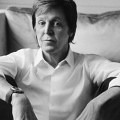

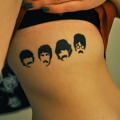
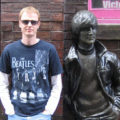
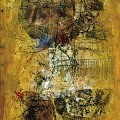
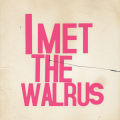
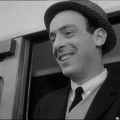
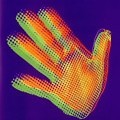
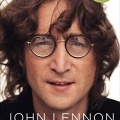
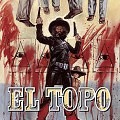
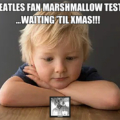
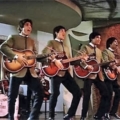
This is fascinating, Michael. We are roughly the same age and while I’ve been obsessed with the Beatles and 60s culture since I hit double figures, I only really started digging DEEP into the 60s (aside from the Beatles) around 20 years (I know, ONLY 20 years ago, ha!) but what I soon became aware of was how necessary that deep digging was to really understand the world I grew up in. I think we came into this world at the start of the slowing down of whatever the hell it was that started in the mid-50s in America and then bounced back and forth across the Atlantic for a while and reached its peak around 1967-69. I’m not impartial enough to discern how much that period still resonates in the world today beyond obsessives like myself, but its echoes were the ever-present and pervading backdrop of my formative years even before I had any understanding of what it was or what it meant – which is probably why I remain obsessed.
By the way, some of Chad and Jeremy’s later output – after they went ‘psychedelic’ (get on board the bandwagon, boys) – is worth exploring for anyone who hasn’t already. Check out the very quirky Rest In Peace, for example, and Sunstroke is an absolute gem. But anything produced by Gary Usher is worth listening to, in my opinion.
I was there (first wave of Beatlemania and everything that followed) but I was only a small, very observant child.
The furious pace of change in The Beatles’ music: it was so furious that I think even the Beatles couldn’t keep up with it. Some documentaries reveal the odd fact that while they were recording their first wave of psychedelia they were still going onstage and singing HELP! and other moptop songs.
I think that’s also true of people who were middle-aged and older in the ’60s. I’d always hear them complain about “noisy guitars, banging drums, and screaming lyrics.” I remember Rex Reed on the Merv Griffin show, saying all Rock music sounded like banging garbage can lids. 1963? 1969? It probably all sounded the same to them.
It’s the same way I perceive 2013 to 2019. Those years flew by for me. A young Hip Hop fan could write an essay about the various trends and fashions that blossomed in that time, or about the evolution of their favorite artist. There are artists I love hearing, like Sampa the Great, Sa-Roc, Desiigner, and Liv.e, but I admit most contemporary music is undifferentiated mush to me. I don’t comprehend the finer details of pop culture anymore.
As a child who was glued to TV and radio in the 1960s, I could see the gulf between commercial culture and the new youth culture. Like the advertising jingles that wanted to sound “mod” but were obviously some big band era session musicians pulling off a bad imitation. Like the Vegas standup comics who’d grow their hair and sideburns long, but still use pomade to slick it all down. Like the awkward variety show production numbers. Bert Parks singing “Let ‘Em In” ? Stuff like that was on TV every night in the ’60s.
Great comment Baboomska! Quite agree with how hard it is to tease out meaning from the currents and sounds of modern pop culture. I have to leave that to the young ones.
Thanks, Neal.
Even the newer artists I like, I couldn’t tell you much about their musical evolution or significance. I listen to individual songs without understanding their background at all. Somewhat the way my father liked the Beatles in 1966. He admired a few songs but had no interest in the Beatles story itself. Things were moving too fast and he was too busy.
Brilliant piece and wonderful info.
Two remarks:
1) I started listening to Radio Veronica, a pirate station in the Netherlands during the summer of 1968, I was 12 years old.
And indeed that context is unique for the experience of the music, and how Beatles’ music both stood out, attracted extra attention or feelings, or disappeared among music much stronger/complexer and more appealing.
2) What do you mean by ‘history’ and ‘lived memory’ and how that is different, from the perspective March 2023?
@Rob, is there any Radio Veronica online?
What I mean by history and lived memory is that history is a constructed story reflecting the needs and desires of our time–a tool to make since of an unruly past–“a set of lies agreed upon.” Whereas lived memory is what you just shared about Radio Veronica.
Idon’t know about Radio Veronica, but Radio Caroline is online
[…] Previous […]
Really a fine bit of writing @Michael Gerber.
I also have been thinking a lot about the mid-sixties lately. You juxtapose Chad and Jeremy with some of the Beatles’ work while mentioning the Troubadour. I have been mulling over the Beach Boys and The Doors—both groups that arose, geographically, within a six mile or so radius from LAX but whose temporal separation on a mere two or three years could have been that of a different century.
From the summer of 1963 and well into 1964, the Beach Boys were giving concerts in which they were singing about being true to your school, the little Surfer Girl, and in Don’t Worry Baby regrets about getting into a car race.
In the summer of 1966 Jim Morrison and his ensemble were ensconced in Sunset Sound Recorders in Hollywood putting onto tape concepts of breaking through to the other side and a tone poem, The End, in which Jim riffs about the classical Oedipus theme…something for which they were once booted out of the Whiskey a Go Go.
Granted, songs are not the only markers in the changes, even upheavals, in the culture of the 1960s, but they certainly are important milestones that reflect not only the depth of the tectonic shifts, but also their rapidity—it really was happening all that fast.
I was born in 1961 and I remember my ten-year-older brother always having the radio on at our home north of Chicago. DJs like Dick Biondi (after his return from LA) spinning discs. Although Biondi did not affect the same “radio voice” as Don Steele, many other DJs did—or at least were trying to somehow emulate it. Not sure how that style became popular, but it certainly is of its time. Sadly, Steele became nearly deaf and he apparently talked that loud when he was not in the studio.
I like your comparison of the 1960s to the 1920s. When I was a junior in high school, I read a book called Only Yesterday by Frederick Lewis Allen. It is a quick and easy read, but written in 1931 it is a wonderful recap of the societal changes the U.S. underwent in the Twenties. The financial world, radio, automobiles, Teapot Dome, and other events gain mention, but the underlying theme is just how quickly and significantly things were changing. The changes of the sixties were, obviously, different in many ways, but I believe their speed and significance have direct relation to the twenties and, like you, I cannot find a better comparison.
I thought Liberace’s performance in The Loved One was quite droll but, other than that, I did not like the book when I read it so many years ago nor did I find the film, which I only saw in the past ten years, to be anything special.
Waugh seemed not to like Americans and he certainly did not know how to properly sketch them. His “Loot” (the American Lieutenant) in his Unconditional Surrender, for example, is very poorly done. Perhaps his snobbery simply got in the way. Shame as his early work such as Decline and Fall, Vile Bodies, and A Handful of Dust are all, for their time, superbly amusing. All of this did not, as you hint at, carry over when the world around him changed.
Really like your explorations of the greater relevance of the 60s!
Note: Not sure why I cannot get the italics to work when I mention songs, books, etc.
Neal, you said:
“I was born in 1961 and I remember my ten-year-older brother always having the radio on at our home north of Chicago.”
That was my experience as well. I hatched in ’58 and I had a brother nine years older who was collecting records and picking all the radio stations in 1964. Since we were in NY, we got Murray the K and Cousin Brucie.
If I had been an only child I wouldn’t have absorbed all that music so soon. It’s the “older sibling syndrome” where late Boomers (Generation Jones?) are introduced to the culture by older brothers and sisters.
“I was there” during the societal explosions of the ’60s, but because of my age I was like a mouse on the Titanic. Skittering down hallways, peeking around walls. Observing anxiously but certainly not a part of the action.
The 1920s! I’m reminded of the Peter Arno New Yorker cartoon. A stuffy old gentleman finds himself in an embrace with an inebriated flapper and exclaims: “Good God, woman! Think of the social structure!”
Good point about the older siblings introducing us to the music and culture. It helped having them explain things and give a little context so that we could, in time, understand what they were seeing and hearing during those years. Plus, we inherited any number of records as they moved along and that is not half bad in itself.
Found the cartoon. Thanks for mentioning it as I had never seen it before.
I’m a bit late to this, but I’ll reply anyway! For me, it was my mom who introduced me to music and culture, rather than my older brother, who liked some music but wasn’t what I’d really call a fan. Mom always had the radio on in the house and in the car (WLS-AM here in Chicago) so I still have a lot of nostalgia for ’70s music in particular. I’ll definitely have a listen to that radio station. But to the point of Michael’s post, I do hear what he’s talking about quite a bit because I have a Sirius XM account, and one of the stations I have favorited are “60s on 6”, “60s Gold”, and the Classic Vinyl station. You can definitely get the sense of how far ahead the Beatles were from some of their contemporaries by listening to the first two stations in particular. And, not that their audiences could hear it, but it must have been a bit strange to hear the Beatles playing their very early hits along with “Paperback Writer” during the 1966 tour, when the latter sounded like it was from a completely different band.
BTW, I’m a couple years older than Michael – Sgt. Pepper and I were introduced to the world just a few days apart, so, while I missed experiencing the Beatles as a working group, they were still very much on the radio in the ’70s, as were all of the Beatles’ solo music. I do have wonderful memories of laying on the living room floor around ’71 and looking intently at mom’s copy of “Let it Be” or “Hey Jude” when she played them. You could say that I’ve been a fan almost since birth!